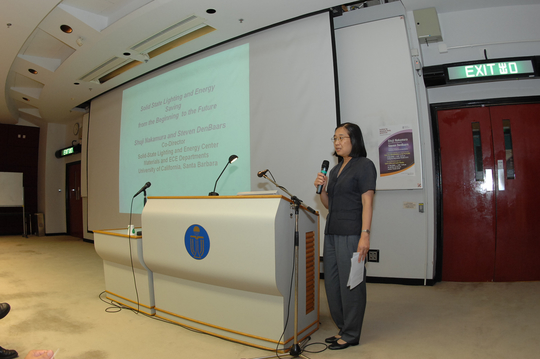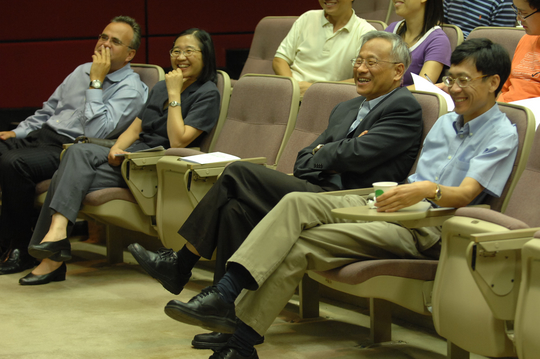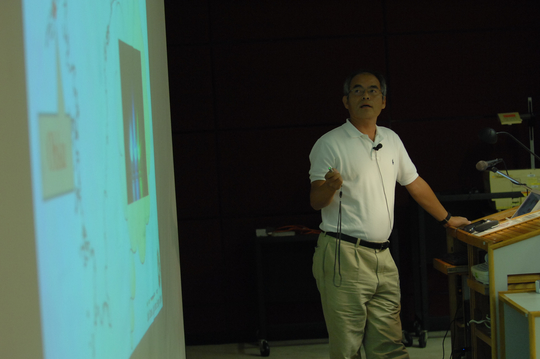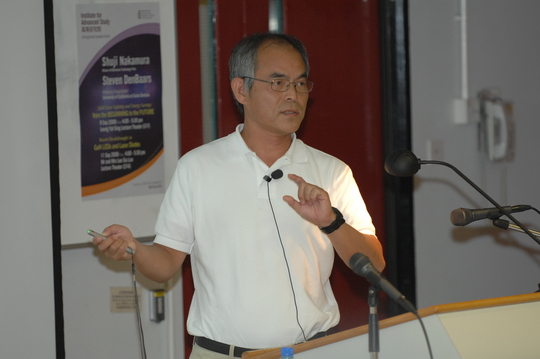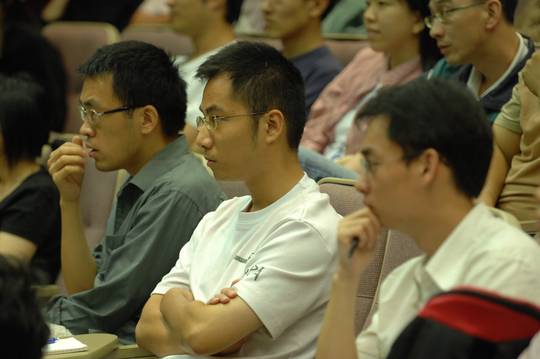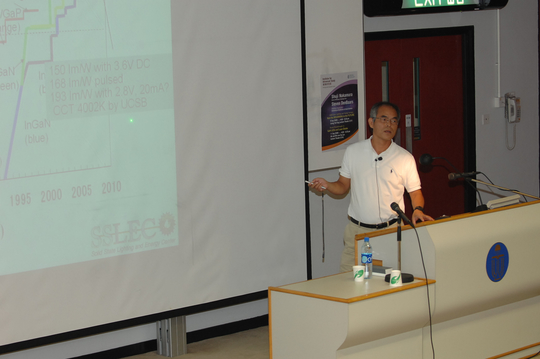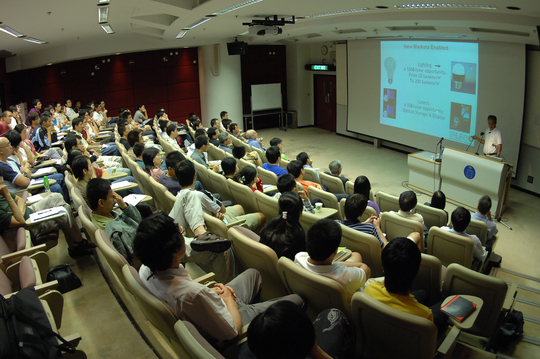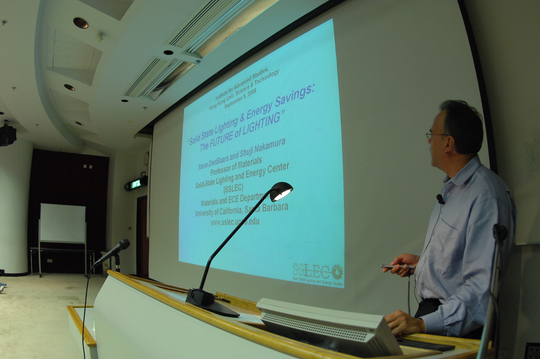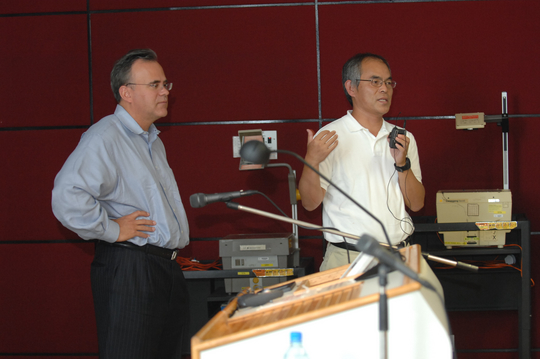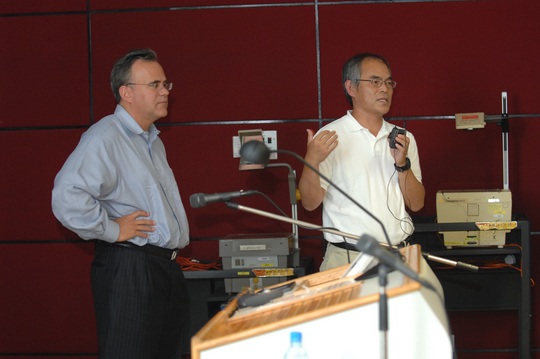The History and Developments of Nitride-Based Blue LEDs and Laser Diodes & Recent Breakthroughs in GaN LEDs and Laser Diodes
Abstract
The History and Developments of Nitride-Based Blue LEDs and Laser Diodes
Nitride-based high brightness blue LEDs were invented in 1993. Since that time, high brightness green and white LEDs, and blue laser diodes were invented. These LEDs and blue laser diodes have been used for many applications. In recent days, white LEDs are used for lighting applications in order to reduce the energy consumptions due to a great concern of the global warming issues. We like to talk about the history of nitridebased blue/green/white LEDs and applications.
Recent Breakthroughs in GaN LEDs and Laser Diodes
Charge separation due to spontaneous and piezoelectric polarization inherent to the wurtzite structure has deleterious effects on the performance of most c-axis oriented devices. To overcome this problem, Nonpolar GaN, such as a-plain and m-plain GaN or semipolar GaN substrates have been grown. We reported the fabrication of violet InGaN/GaN Light Emitting Diodes (LEDs) on the first nonpolar m-plane (1 100) GaN bulk substrates.1) The output power and External Quantum Efficiency (EQE) at a driving current of 20 mA were 28 mW and 45% respectively, with peak electroluminescence (EL) emission wavelength at 400 nm. The first nonpolar m-plane (11 00) nitride laser diodes (LDs) were realized on low extended defect bulk m-plane GaN substrates.2) Broad area violet lasers were fabricated and tested under pulsed and CW conditions. These laser diodes had threshold current densities (Jth) as low as 2.3KA/cm2 for pulsed and 7.5 kA/cm2 for CW operation. Stimulated emission was observed around 405nm. Also, we fabricated high-efficient violet,3) blue, green4) and yellow LEDs,5) and violet laser diodes6) on semipolar GaN bulk substrates. In order to make a real GaN bulk crystal, we have developed the ammonothermal method. Recently, we obtained the size of 6-8 mm bulk GaN crystal.7) The recent performance of Nonpolar, Semipolar and Polar (c-plain) GaN-based devices, and bulk GaN growth are described.
About the speakers
Prof. Shuji Nakamura was born in Japan in 1954. He obtained B.E., M.S., and PhD. degrees in Electrical Engineering from the University of Tokushima, Japan in 1977, 1979, and 1994, respectively. He joined Nichia Chemical Industries Ltd in 1979. In 1988, he spent a year at the University of Florida as a visiting research associate. In 1989 he started the research of blue LEDs using group-III nitride materials. In 1993 and 1995 he developed the first groupIII nitride-based blue/green LEDs. He also developed the first group-III nitride-based violet laser diodes (LDs) in 1995. He has received a number of awards, including: the Nishina Memorial Award (1996), MRS Medal Award (1997), IEEE Jack A. Morton Award, the British Rank Prize (1998) and Benjamin Franklin Medal Award (2002). He was elected as the member of the US National Academy of Engineering (NAE) in 2003. Also, he received the Millennium Technology Prize in 2006. Since 2000, he is a professor of Materials Department of University of California Santa Barbara. He holds more than 100 patents and has published more than 390 papers in this field.
Prof. Steven DenBaars is a Professor of Materials and Co-Director of the Solid-State Lighting Center at the University of California Santa Barbara. He obtained M.S. and PhD. degrees from the University of Southern California in 1986 and 1988 respectively. From 1988-1991
Prof. DenBaars was a member of the technical staff at Hewlett-Packard's Optoelectronics Division involved in the growth and fabrication of visible LEDs. Specific research interests include growth of wide-bandgap semiconductors (GaN based), and their application to Blue
LEDs and lasers and high power electronic devices. This research has lead to the first US university demonstration of a Blue GaN laser diode and over 7 patents pending on GaN growth and processing. In 1994 he received a NSF Young Investigator award. He has authored or co-authored over 431 technical publications, 150 conference presentations, and 14 patents.


